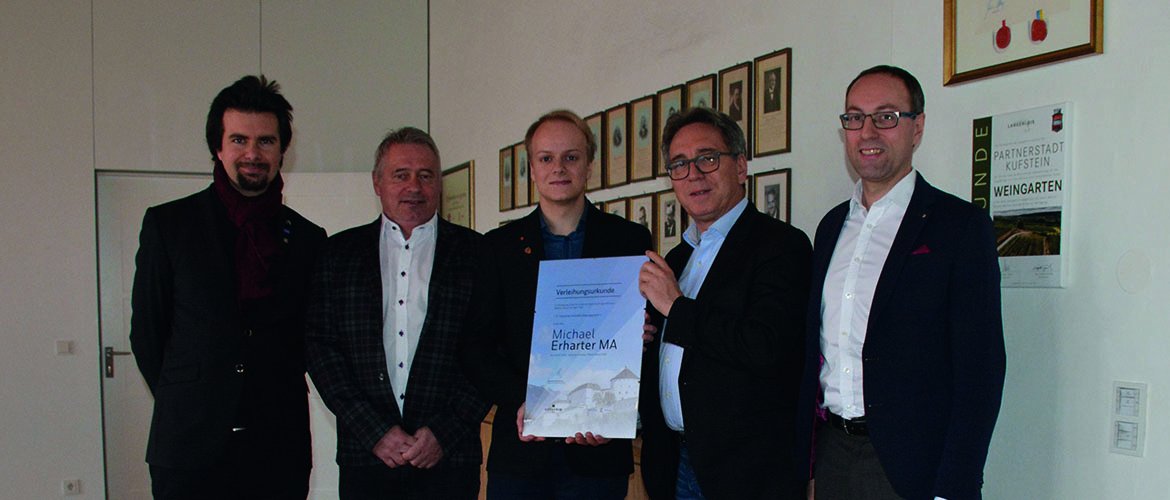
Presentation of the Kufstein Thesis Award
The city of Kufstein annually recognizes exceptionally good master theses at the University of Applied Sciences Kufstein Tirol with the “Thesis Award”. This year, Municipal Works Kufstein was also involved in the award and contributed EUR 1000 as prize money. The reason for this was the topic of the laureate’s thesis “IP-based traffic management” in which UAS graduate Michael Erharter intensively grappled with autonomous driving based on the traffic circle at the Franz-Josefplatz.
The University of Applied Sciences Committee unanimously chose the thesis by Michael Erharter as this year’s winner. The award was presented on December 13 at the Kufstein City Hall. Mayor Martin Krumschnabel was full of praise: “This is a work that benefits everyone. The master thesis provides specific impulses for the prospective development of urban traffic in Kufstein.”
Shortcut to the distinguished master thesis
In our present digital times, previous approaches, e.g. on the autonomous navigation of individual cars, are constantly being revised. The goal is to reach optimal solutions or develop new concepts. Michael Erharter’s thesis also pursues this approach. The graduate of FH Kufstein pursued the master study program Web Communication & Information Systems.
His thesis proposed that a connection can be established between IT networks and autonomous traffic networks based on traffic telematics (control and optimization of public transport). A new concept for autonomous driving is conceivable if the simulation is successful.
Michael Erharter, MSc. developed a simulation model for a Kufstein traffic circle and designed an IT network that precisely works according to the same rules as the stated traffic circle. Packages are sent through this network in individual simulations, which, from the viewpoint of the traffic telematics engineer, represent cars. Picture an e-mail being sent from one PC to another while the PCs represent the entries and exits into the traffic circle, and the e-mail represents the vehicle. The path taken by the package would also be taken by an autonomous vehicle.
Conclusion
Thanks to the UAS graduate, Kufstein’s traffic circle would be one of the first traffic areas suitable for autonomous vehicles if autonomous driving were allowed in Austria!